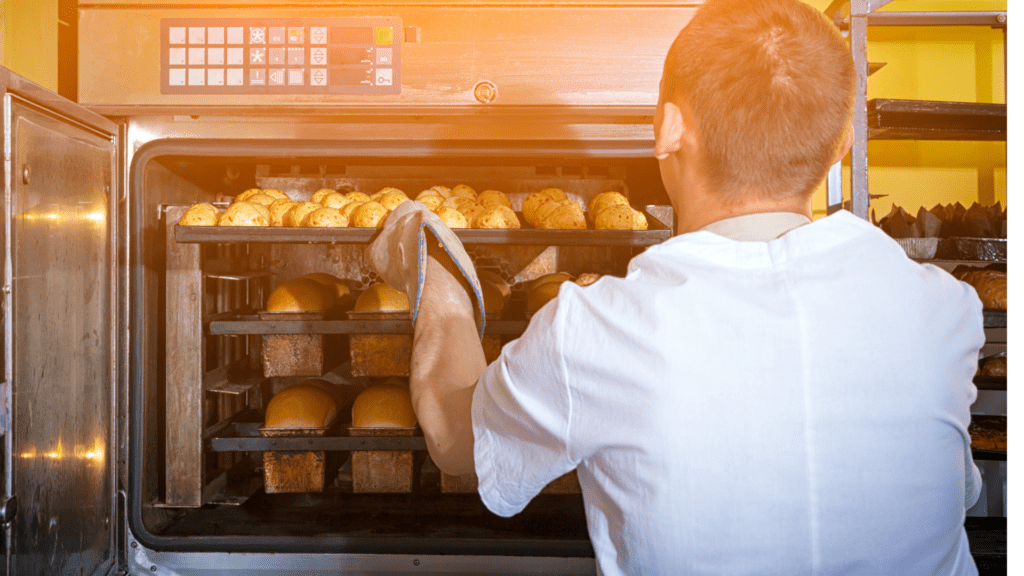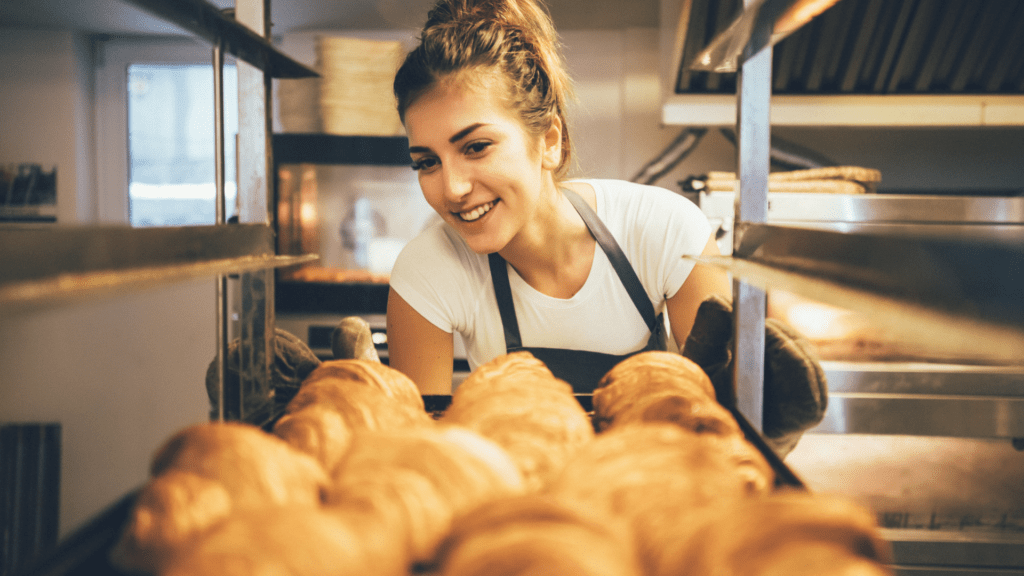Bread, a timeless culinary delight, has evolved over centuries, reflecting diverse cultures and traditions. In recent times, a resurgence of interest in artisanal techniques has propelled fermented bread making into the limelight. This transformative process not only enhances the nutritional value of the bread but also introduces a symphony of complex flavors. In this article, we embark on a journey to unravel the secrets of fermented bread making, exploring the artistry that turns a humble loaf into a masterpiece.
The Alchemy of Fermentation
At the heart of the magic lies the process of fermentation. Fermentation is a natural biological transformation that occurs when yeast and bacteria interact with flour and water, producing carbon dioxide, alcohol, and a myriad of flavorful compounds. This alchemical reaction not only leavens the dough but also imparts a depth of taste that is hard to achieve through conventional methods.
Choosing the Right Ingredients
The foundation of exceptional fermented bread lies in the quality of its ingredients. Opt for high-quality flour, preferably unbleached and stone-ground, as it retains more nutrients and flavor. Water, a seemingly simple component, plays a crucial role. Chlorine in tap water can hinder fermentation, so using filtered or spring water is recommended.
Selecting the right type of salt is equally important. While salt controls the fermentation process, it also contributes to the overall taste. Experiment with various salts to discover the one that complements your desired flavor profile.
Crafting the Perfect Starter
A sourdough starter, often referred to as the “mother,” is the heartbeat of fermented bread making. Creating and maintaining a robust starter is an art in itself. Begin with equal parts of flour and water, allowing wild yeast and bacteria from the environment to gradually populate the mixture.
Regular feedings and maintaining the right temperature foster a healthy and active starter. The unique microbial community in your starter contributes distinct characteristics to your bread, ensuring a one-of-a-kind flavor profile.
Mastering the Dough
The key to achieving the perfect texture and structure lies in mastering the dough. Balancing hydration levels, kneading techniques, and the fermentation time all play crucial roles. Adjust the hydration to achieve the desired crumb structure, with higher hydration resulting in an airy, open crumb.
Experiment with different kneading methods, from traditional hand-kneading to more modern stretch-and-fold techniques. Each method imparts unique qualities to the dough, influencing the final product’s texture and flavor.
Flavorful Additions and Enhancements
Elevate your bread-making game by incorporating diverse flavors through various additions. Herbs, seeds, nuts, and dried fruits introduce complexity and a delightful contrast of textures. Experiment with different grains and flours to add depth to the flavor profile.
Consider pre-soaking grains or seeds to enhance their texture and prevent them from drawing moisture from the dough during baking. Infusing oils with herbs and spices can also bring an extra layer of aromatic goodness to your bread.
The Art of Shaping
The shaping process is where the artisanal touch truly comes into play. Experiment with different shapes and scoring patterns to create visually stunning loaves. Beyond aesthetics, shaping impacts the final texture, allowing you to tailor the bread to your preferences.
Use flour or seeds on your work surface to prevent sticking, and develop your signature shaping technique. Whether it’s a classic boule, a rustic batard, or an intricate braided loaf, let your creativity flow.
Baking: The Grand Finale
The culmination of your efforts unfolds in the oven, where the real alchemy takes place. Preheat your oven adequately, and invest in a quality baking stone or Dutch oven to create the ideal baking environment. Steam is crucial for achieving a crisp crust, so use a water pan or spray the oven with water during the first few minutes of baking.
Experiment with different baking temperatures and times to find the perfect balance between a golden crust and a moist interior. The aroma filling your kitchen is a testament to your mastery of the craft.
Troubleshooting and Fine-Tuning
Even seasoned bakers encounter challenges. Understanding common issues, such as uneven rising, dense crumb, or a lack of sourness, empowers you to troubleshoot and refine your technique. Patience and observation are key; every batch is an opportunity to learn and improve.
Beyond the Loaf: Creative Applications
The allure of fermented bread making extends beyond the conventional loaf. Once you’ve mastered the basics, explore creative applications that push the boundaries of this ancient craft. Consider crafting artisanal pizzas with a sourdough crust, incorporating fermented bread into unique sandwiches, or even experimenting with sweet variations like chocolate sourdough.
Embrace the versatility of your sourdough starter by using it in pancakes, waffles, and other baked goods. Its distinctive tang adds a delightful twist to familiar recipes, creating a harmonious balance between the savory and the sweet.
Diving Deeper: Advanced Techniques
For those eager to delve deeper into the art of fermented bread making, advanced techniques await. Explore long fermentation methods for even more complex flavors and improved digestibility. Adopt autolyse, a technique involving pre-mixing flour and water before adding the starter, to enhance gluten development and dough extensibility.
Venture into the world of heirloom grains and experiment with diverse flours like spelt, einkorn, or emmer. Each brings its unique character to the bread, opening up a realm of possibilities for crafting distinctive loaves.
Sharing the Joy: Community and Collaboration
One of the most rewarding aspects of mastering the craft is sharing the joy with others. Consider joining a local bread-baking community or starting one of your own. Exchange tips, recipes, and perhaps even organize a bread-making workshop. The collective knowledge and camaraderie of fellow enthusiasts can elevate your skills and foster a sense of community around this timeless tradition.
Collaborate with local farmers, millers, or specialty food producers to source unique ingredients. Building connections with like-minded individuals not only enriches your bread-making journey but also supports local economies and sustainable practices.
The Sustainable Bread Maker
As the world increasingly turns towards sustainable living, consider the environmental impact of your bread-making endeavors. Opt for locally sourced and organic ingredients, reducing your carbon footprint. Embrace zero-waste practices by repurposing discarded sourdough starter into pancakes or crackers, and composting leftover ingredients.
Experiment with whole grain flours, which generally require fewer resources and provide a more holistic nutritional profile. By adopting eco-friendly practices in your bread-making routine, you contribute to a sustainable, planet-friendly culinary experience.
Final Thoughts: A Culinary Odyssey
In conclusion, the mastery of fermented bread making transcends the confines of a kitchen; it is a culinary odyssey that engages the senses, stimulates creativity, and nourishes the soul. From the humble beginnings of flour, water, and a pinch of salt emerges a work of art that speaks to the rich tapestry of human history.
As you embark on this journey, let curiosity be your guide. Revel in the imperfections, celebrate the unique characteristics of each loaf, and savor the deep, nuanced flavors that only time and fermentation can bestow. Sculpting flavor through the craft of fermented bread making is not just about nourishing the body; it’s about feeding the spirit, creating connections, and leaving a legacy of artisanal excellence for generations to come. Happy baking, and may your loaves always be a testament to the mastery you’ve achieved in this timeless craft.


